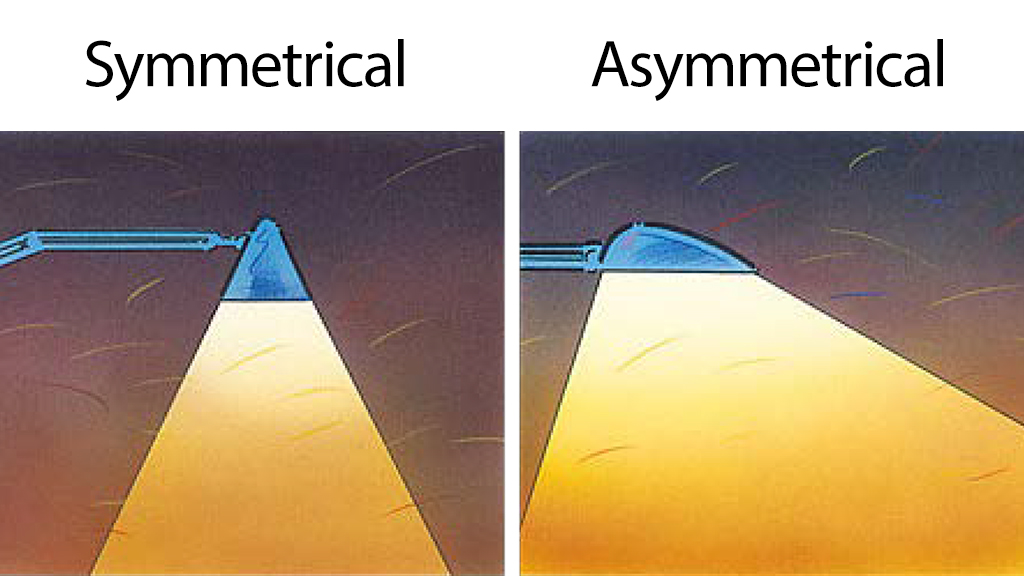When developing an overarching lighting plan it’s easy to overlook the role of task lighting. Task lighting varies from ambient (general office) lighting in that it provides the necessary light for a particular task, such as reading, computing, and note taking.
One important factor in determining appropriate task lighting is the amount of contrast between it and the surrounding ambient lighting. If there’s a wide gap in intensity, one’s eyes must continually adjust and readjust, which leads to strain and fatigue. For this reason, it’s important to make an informed decision about the kind of task lighting that best suits your space and the people who use it. This is where choosing between symmetrical and asymmetrical task lighting comes in.
Asymmetrical lighting relies on an advanced, computer optimized reflector system to direct light laterally from the shade across the work area. It has several advantages: There’s no direct eye contact with the light source; light is distributed evenly over the work area; there’s a healthy level of contrast of light between the workstation and the surrounding work area; and, finally, shadows are often less obtrusive. Asymmetrical light is suited for work areas where monitors are in use, since the light can be directed away from the screen and toward the work surface.
Unlike asymmetrical lighting, which concentrates light in one direction, symmetrical task lighting spreads light equally in all directions. Because symmetrical lighting tends to utilize higher footcandles (amount of surface light) in smaller spaces, it is ideal for inspection and visual tasks in which the contrast, or difference in brightness between an object and its surroundings, is minimized. Research indicates that for every 1% loss in contrast, 15% greater light is needed to maintain the same level of visibility.
In many ways, task lighting comes down to the task at hand and the environment in which it performs. This leads to several useful questions. For example, what is the contrast between the workstation and the workplace? What is the nature of the work being performed? And how old are your workers (a 40 year-old may need up to twice as much light as a 20 year-old)? Answering these and other questions can help you determine if symmetrical or asymmetrical task lighting is ideal for your workplace.

